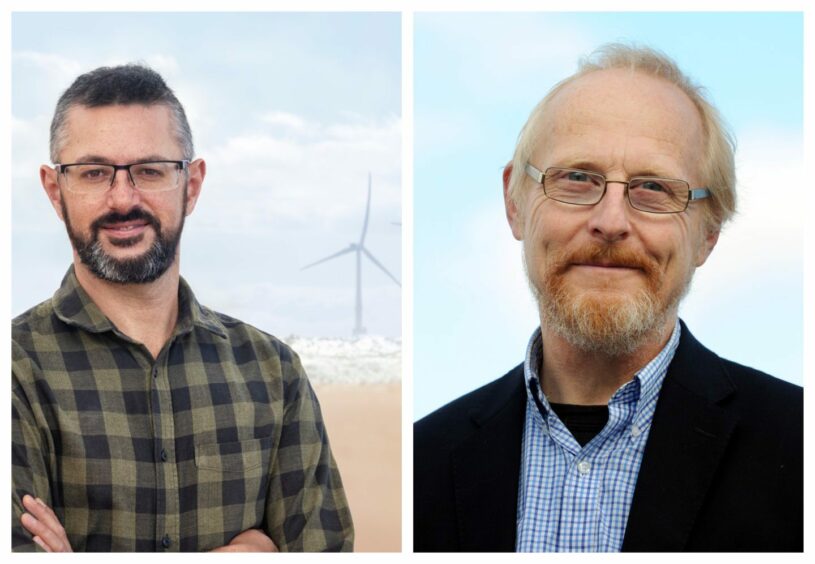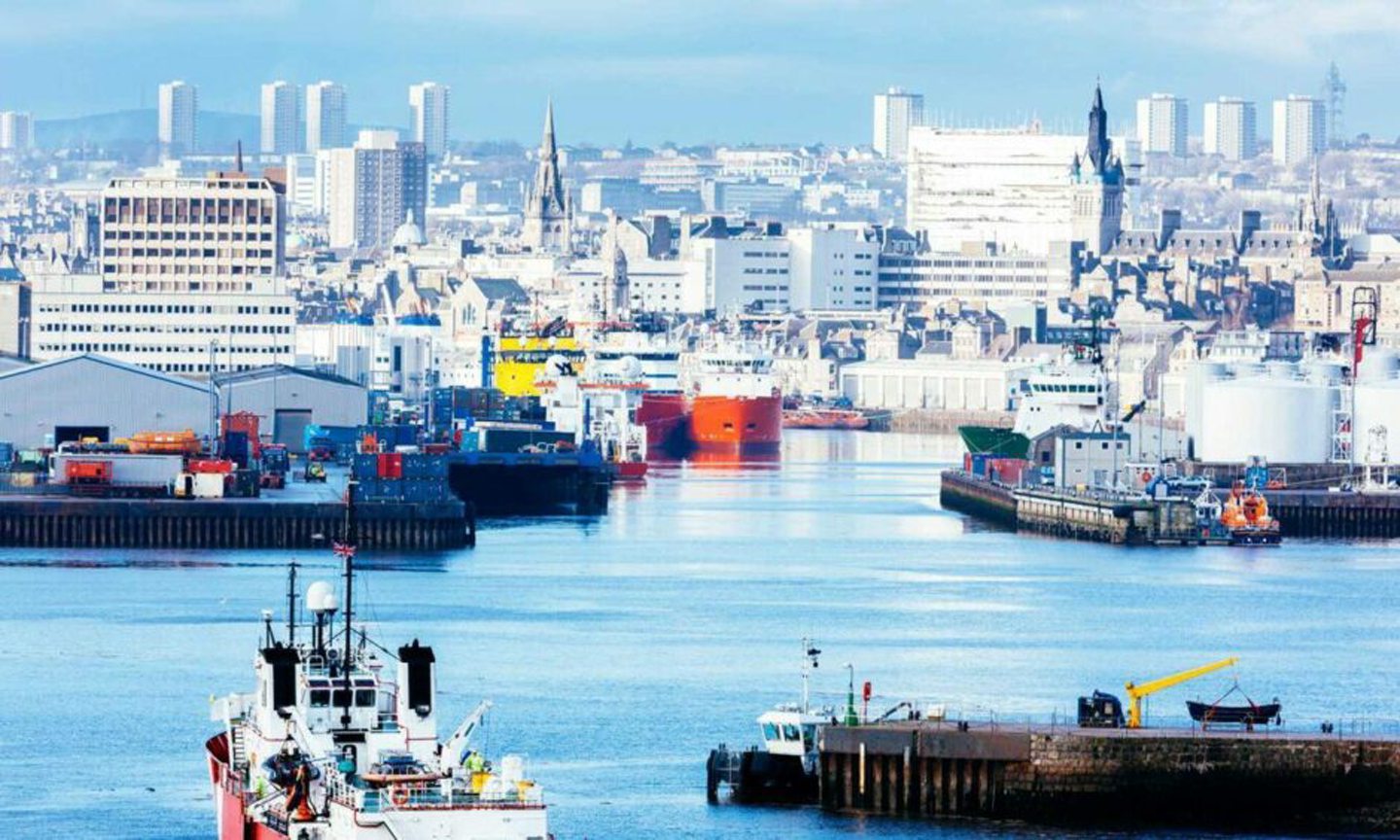
News this month that Cromarty and the Firth of Forth have been chosen to become Scotland’s green freeports was unquestionably a bitter pill to swallow for the energy sector in North-east Scotland.
Despite the effort put into the Aberdeen-Peterhead joint-bid, with some seriously good ideas, they were beaten – probably soundly – by the Cromarty and Forth submissions, both of which, frankly, are better able to deliver on Scotland’s ambition for a large-scale and rapid transition from oil and gas dependency to low carbon energy.
Our first reaction is that the decision by Holyrood to favour Cromarty and the Firth of Forth over the Aberdeen-Peterhead bid comes as no surprise.
There are compelling logics at play; Cromarty with its now long track record of serving the offshore oil and gas industry and increasingly successful engagement with offshore/onshore wind; and the Firth of Forth with its even more diverse engagements in energy, including petrochemicals, major port facilities, engineering/fabrication capacity and the fact that it is right on Edinburgh’s doorstep.
The Forth area accounts for about a third of the Scottish GDP; Aberdeen just 17% – mostly oil & gas related.
There will of course be endless pouring over the tea leaves regarding what went wrong, what went right, and where this leaves Aberdeen and the Scottish NE in terms of Scotland’s drive for Net Zero greenhouse emissions by 2045.

The Scottish media especially have already highlighted a ‘catalogue of betrayals’; not least the Scottish Governments’ new draft Energy Strategy headlining the accelerated “end of oil”; the poorly framed windfall tax regime; the yet again delaying of funding for the Acorn carbon-capture project’, and now the Green Freeports.
So, is this the death-knell of Aberdeen that some have already proclaimed?
We don’t think so as there is a long history of Aberdeen successfully reinventing itself in relation to external economic drivers. And, after all, it soundly beat Dundee by taking the North Sea oil and gas crown despite the latter’s considerable advantages.
According to the recent Skidmore independent review of the UKs approach to Net Zero, this is the ‘economic opportunity of the 21st Century’.
NE Scotland will remain a cornerstone energy hub for Scotland and the wider UK for 20-30 more years.
However, without a clear regional cross-sector vision around the green economy that builds upon local strategies such as Aberdeen City Council’s Net Zero Aberdeen Route-map, its current influence will wane as offshore oil & gas winds down.
That process has in reality started. And its business community has been slow in grasping low carbon opportunities, though at least Hywind and the European Offshore Wind Deployment Centre are within close proximity, with the Kincardine offshore windfarm a modest distance down the road.
But it cannot do the big heavy stuff that is possible at Cromarty and on the Forth. It can’t do petrochem, which is crucial to Scotland’s hydrogen ambitions – green, blue or grey, and never will, despite Aberdeen City Council’s dream of leading the way.
Despite this, let it not be forgotten that Aberdeen has strong relationships with both Cromarty and the Forth and it is precisely because of oil & gas. And it has been sustained for 50 years, thus far.
But this time its different; whilst we can see a sustained relationship with Cromarty going forwards, the situation with the Forth is different. And Edinburgh will be perfectly happy to pull the rug from beneath Aberdeen’s feet.
Of course, at this stage we don’t know in detail what the rules of economic engagement will be for Cromarty and Forth. But what if the Forth green-port sets about trying to persuade BP to shift its offshore wind HQ planned for Aberdeen to Edinburgh. That would be a really serious blow.
Notwithstanding, there is a serious need for Aberdeen and NE Scotland to really get to grips with the opportunities around Net Zero; widen the lens beyond its economic reliance as an oil & gas service port and business hub; and fight tooth and nail for premier place at Scotland’s (and wider UK’s) Net Zero top table.
Regrettably, modern history is littered with international examples of regions devastated by economic transitions, poorly planned (or not at all) and to left the mercy of market forces.
Oil & gas-dependent communities here in Scotland and offshore workers have a right to be suspicious of just transition terminology.
Failed transitions can lead to embedded generational decline and unemployment as the industries and communities collapse around them. It creates deep fear and reticence about change, the process of change, and who controls it.
Destruction of the UK coal industry during the Thatcher era is an absolute case in point. The disappearance of much of the UK’s steel industry and shipbuilding are two further examples; the legacy being communities gutted and blighted for decades.
We should draw deeply upon where transitions are considered to be / have been a success; where workers, communities, businesses and governments have created genuine partnerships that enabled new conversations about the future and reinvention of regional and local economies.
Aberdeen City Region is in reality at the doorway to an enormous opportunity; except that it has stood at this low carbon threshold for more than 20 years and barely taken any steps forward.
One of the key aspects of green, low carbon energy is that it is far cheaper than anything that has gone before; especially making it systemically more attractive than fossil fuels and, for that matter, nuclear too.
Uptake is quite literally global and accelerating. $trillions have been committed.
Opportunities are endless and very real as we simultaneously resolve the climate crisis, energy security challenges, AND address the crisis in the way we all live.
Does Aberdeen’s modern historical position as a provider of high-carbon energy services to the North Sea and worldwide act as a barrier to Net Zero industries and development of their technologies?
We’d like to think not; and that the education, skills, ideas, intellectual properties, know-how and hard-won experience developed and honed since oil & gas were first encountered in the North Sea in the 1960s are a hugely valuable currency to success in the rapidly accelerating transition to low-carbon, sustainable energy, whatever form that may take.
And NOT whether or not Aberdeen with Peterhead were knocked out of the Green Freeport ring.
But there is a huge amount of work to do. It’s a sad (and dangerous) indictment that more than a third of energy companies have yet to commit to a Net Zero strategy in NE Scotland, let alone engage in meaningful action.
Go back to the UK emergency energy strategy developed in the late 1990s when Aberdeen and the North Sea were floored by the second global oil price crash.
Among the recommendations made then for survival was diversification, with emphasis on complementary business opportunities, including low carbon energy.
Even then there was a serious need for engagement; but it barely happened.
Sad fact is, there remains serious need for a more diverse, inclusive and comprehensive approach to building a practical, fit-for-purpose Net Zero vision and strategy for NE Scotland. For such does not really exist.
We need to identify realistically, our sectoral and strategic advantages, and ambitions, across the low carbon spectrum be it in offshore (including subsea) power generation, CCUS and demand side solutions that draw on its extensive project engineering and subsea prowess.
And we need to bring everyone along, not just the usual crowd.
And while there is much talk about achieving a just transition, offshore workers warn that is simply not happening; trade unions echo this.
Reality is that the UK’s huge high carbon energy skills base – people and businesses alike – much of which is concentrated in NE Scotland, is needed more than ever before.
It is gold.
But we’re not sure that this is genuinely understood in the corridors of Power in Holyrood or London; or London’s Square Mile, or among the corporations driving the UK’s great Dash for Offshore Wind; a growing number of which have feet in both high- and low-carbon energy.
Aberdeen; we need you more than ever!
Jeremy Cresswell is emeritus editor of Energy Voice
Professor Tavis Potts is Chair in Sustainable Development at the University of Aberdeen
